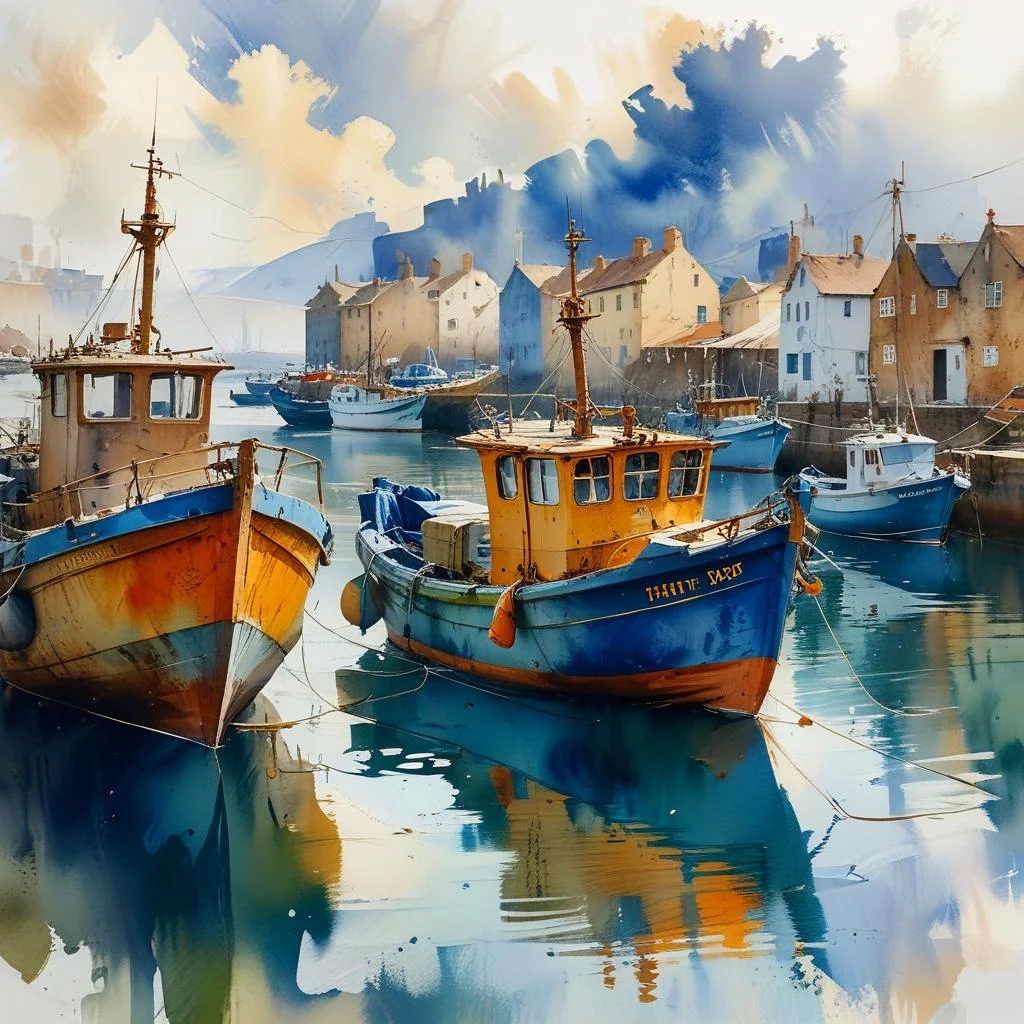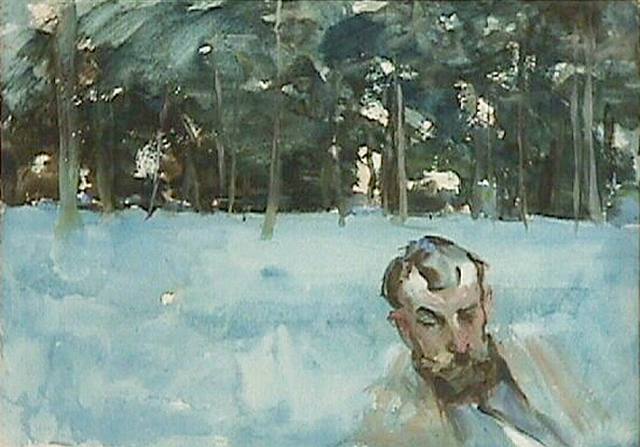For hundreds of years, people have asked the same question: who was the greatest painter ever? It’s like asking who makes the best pizza or which song is the most beautiful – everyone has a different answer! The truth is, picking the greatest painter ever isn’t like choosing the fastest runner or the tallest building. Art touches our hearts and minds in personal ways, making it impossible to crown just one winner.

Key Points Summary:
- Artistic greatness is subjective and depends on personal taste, culture, and time period
- Great painters are judged by technical skill, innovation, emotional impact, and historical influence
- Famous contenders include Leonardo da Vinci, Picasso, Van Gogh, and Michelangelo
- Different eras valued different artistic qualities and styles
- There’s no single “right” answer to who the greatest painter is
What Makes a Painter Great? It’s More Complex Than You Think
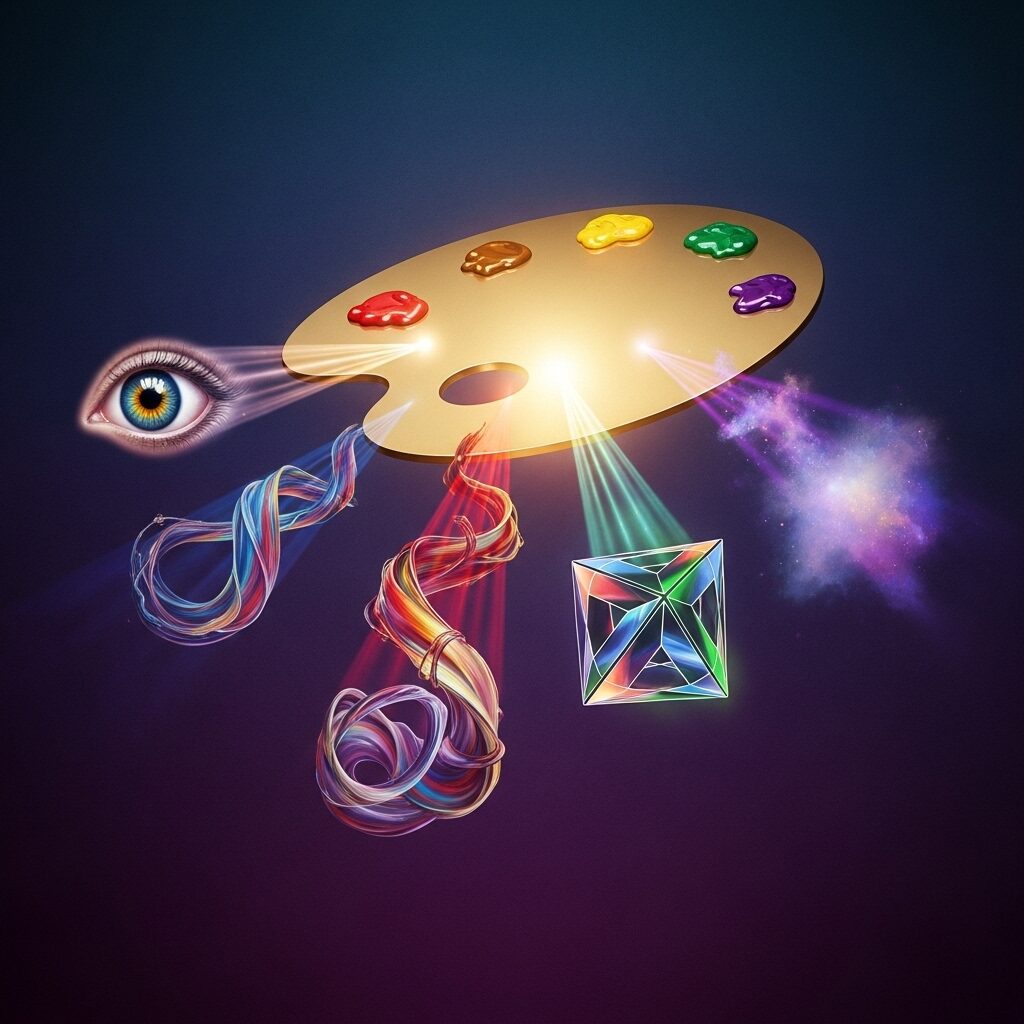
When we try to figure out what makes someone the greatest painter ever, we need to look at several different things. It’s not just about being able to draw really well – though that’s definitely important!
Technical Skill: The Foundation of Great Art
Think of technical skill like learning to play piano. Before you can create beautiful music, you need to know where the keys are and how to move your fingers. Great painters master things like:
- Drawing and anatomy – knowing how bodies and faces really look
- Color mixing – creating the perfect shades and tones
- Perspective – making flat paintings look three-dimensional
- Composition – arranging everything in the painting just right
Leonardo da Vinci was incredible at this. He studied dead bodies (legally!) to understand muscles and bones, which helped him paint people who looked amazingly real. His famous painting techniques like chiaroscuro (using light and dark dramatically) made his artwork pop off the canvas.
Michelangelo painted the entire ceiling of the Sistine Chapel while lying on his back – imagine painting your bedroom ceiling with tiny brushes for four years! That takes serious technical skill.
Innovation: Breaking the Rules to Create Something New
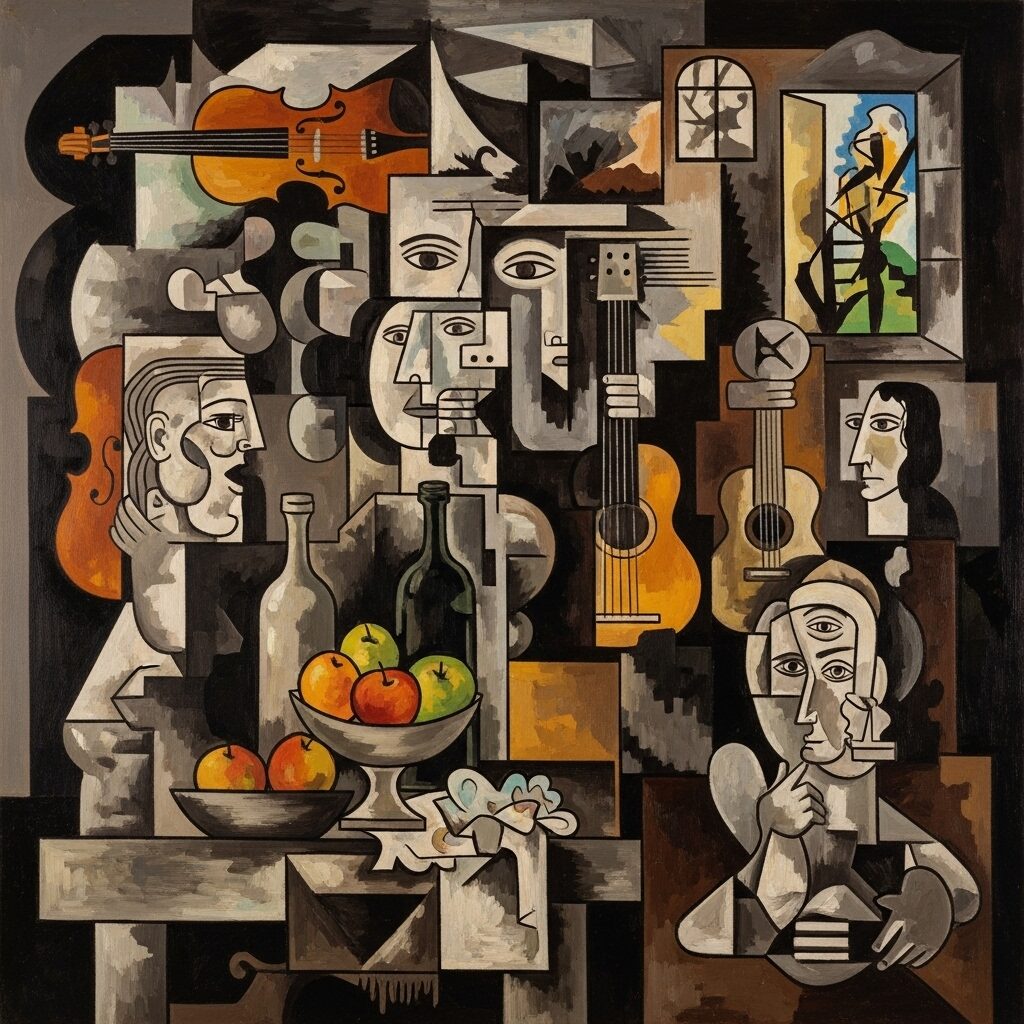
The greatest painters didn’t just copy what came before them – they invented new ways to make art. Pablo Picasso literally broke faces apart and put them back together in his Cubist paintings. People thought he was crazy at first, but now we see it as genius!
Wassily Kandinsky was one of the first artists to paint completely abstract art – paintings that didn’t look like anything real at all. He helped show that art could be about feelings and ideas, not just pretty pictures.
“Every act of creation is first an act of destruction.”
Pablo Picasso
Emotional Impact: Art That Moves Your Soul
Have you ever looked at a painting and felt something strong – maybe happiness, sadness, or wonder? That’s emotional impact, and it’s huge in determining artistic greatness.
Vincent van Gogh’s paintings are perfect examples. His swirling, energetic brushstrokes in “Starry Night” make you feel like you’re experiencing his emotions. Even though he was struggling with mental illness and poverty, his paintings burst with feeling and color.
Rembrandt was a master at showing human emotions. His self-portraits show him aging, and you can see wisdom, sadness, and experience in his painted eyes. It’s like looking into someone’s soul.
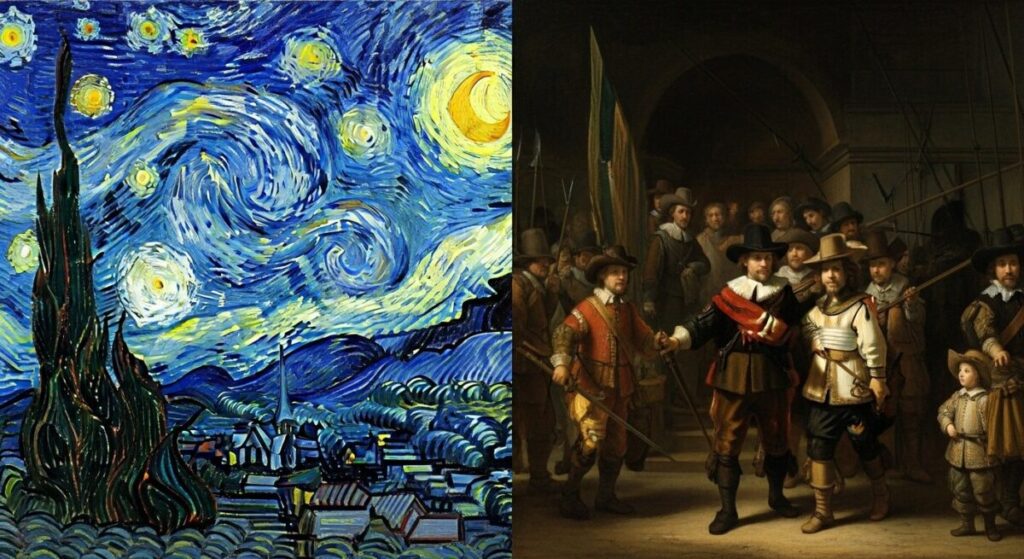
Why We Can’t Pick Just One Greatest Painter Ever
Here’s the thing about trying to choose the greatest painter ever – it’s like trying to pick the best flavor of ice cream. What tastes amazing to you might not be someone else’s favorite, and that’s totally okay!
Cultural Differences Shape What We Value
Different cultures and time periods have valued different things in art:
| Time Period | What They Valued | Example Artists |
|---|---|---|
| Renaissance | Religious themes, technical perfection | Leonardo da Vinci, Michelangelo |
| Dutch Golden Age | Everyday life, realistic details | Rembrandt, Vermeer |
| Impressionism | Light, color, outdoor scenes | Monet, Renoir |
| Modern Era | Breaking rules, new ideas | Picasso, Kandinsky |
During the Renaissance, people thought the best art showed religious stories with perfect technique. But in the 1960s, Andy Warhol became famous for painting soup cans! Times change, and so do our ideas about what makes great art.
Personal Taste Matters Too
Your background, experiences, and personality all affect what art you love. Maybe you’re drawn to Van Gogh’s emotional paintings, or perhaps you prefer the calm beauty of a Monet garden scene. Neither choice is wrong – they’re just different!
The Hall of Fame: Top Contenders for Greatest Painter
While we can’t definitively say who the greatest painter ever is, some names come up again and again in these discussions:
Leonardo da Vinci (1452-1519): The Ultimate Renaissance Genius
Leonardo wasn’t just a painter – he was an inventor, scientist, and engineer too! He designed flying machines 400 years before airplanes were built. His paintings like the “Mona Lisa” and “The Last Supper” are still famous worldwide. What made Leonardo special was how he combined art with science, creating incredibly lifelike paintings.
Pablo Picasso (1881-1973): The Revolutionary Rule-Breaker
Picasso lived to be 91 and created about 50,000 artworks during his lifetime! He co-invented Cubism, which showed objects from multiple angles at once. His painting “Guernica” powerfully protested the horrors of war. Picasso proved that art could change and evolve dramatically.
Vincent van Gogh (1853-1890): The Emotional Expressionist
Van Gogh only sold one painting during his lifetime, but now his works sell for millions! His thick, swirling brushstrokes and brilliant colors expressed his intense emotions. “Starry Night” is one of the most recognized paintings in the world.
Michelangelo (1475-1564): The Master of Human Form
Though he considered himself mainly a sculptor, Michelangelo’s paintings on the Sistine Chapel ceiling are breathtaking. He painted over 300 figures, each one showing incredible understanding of human anatomy and emotion.
Claude Monet (1840-1926): The Light Catcher
Monet founded Impressionism and spent his career trying to capture how light changes throughout the day. His Water Lilies series shows the same pond at different times and seasons, proving that the same scene can look completely different depending on the light.
The Evolving Definition of Artistic Greatness
What people consider “great art” keeps changing. In ancient times, the most realistic painting was considered the best. During the Renaissance, religious and mythological subjects were most valued. The Impressionists shocked people by painting outdoors and showing brushstrokes instead of hiding them.
Today, we value diversity in art more than ever. Street artists like Banksy gain recognition alongside traditional painters. Digital art and mixed media are accepted forms of fine art. This evolution shows that artistic greatness isn’t fixed – it grows and changes with society.
Conclusion: Celebrating Diversity in Artistic Greatness
The question “who is the greatest painter ever?” might never have a single answer – and maybe that’s the beauty of it! Each artist brings something unique to the world. Leonardo da Vinci showed us scientific precision, Picasso taught us to see differently, Van Gogh shared raw emotion, and Monet captured fleeting moments of light.
Instead of trying to rank these incredible artists, we can appreciate how each one expanded what painting could be. The greatest painter ever might be different for each person, depending on what moves them most. That’s what makes art so wonderfully human – it speaks to each of us in its own special way.
Frequently Asked Questions
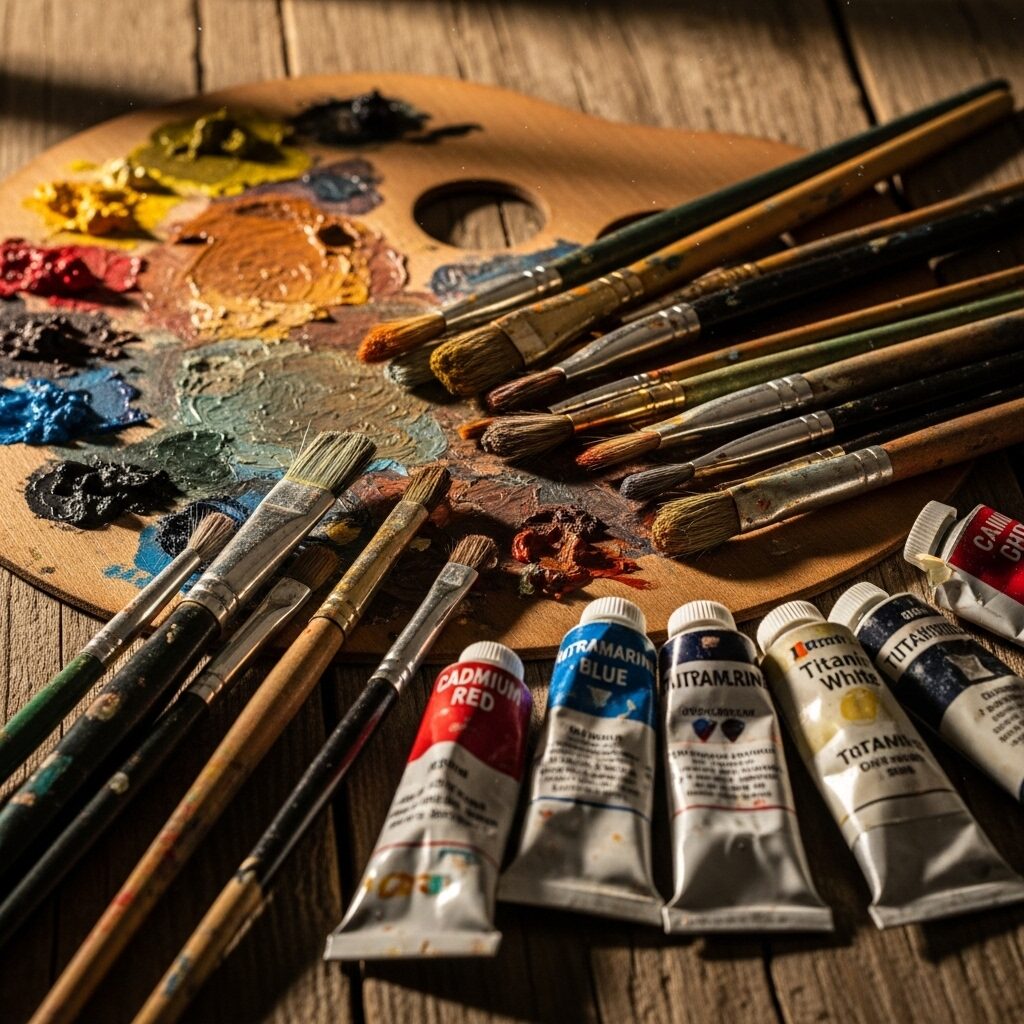
Why is it impossible to determine the greatest painter of all time? Artistic greatness is subjective and depends on personal taste, cultural background, and historical context. What one person finds amazing, another might not appreciate, making it impossible to have a universal “greatest” painter.
What qualities make a painter historically significant? Historically significant painters usually demonstrate exceptional technical skill, innovative techniques, emotional depth, and lasting influence on future artists and art movements.
How do art experts evaluate different painters from different eras? Art experts consider each painter within their historical context, looking at their technical innovations, influence on contemporaries and future artists, and how they advanced or changed artistic traditions.
Why do some painters become famous after death? Many factors contribute to posthumous fame, including changing artistic tastes, historical perspective, art market dynamics, and sometimes just the discovery or rediscovery of their work by new audiences.
What role does cultural background play in appreciating art? Cultural background significantly influences art appreciation, as different societies value different artistic qualities, subjects, and styles based on their history, religion, and social values.

